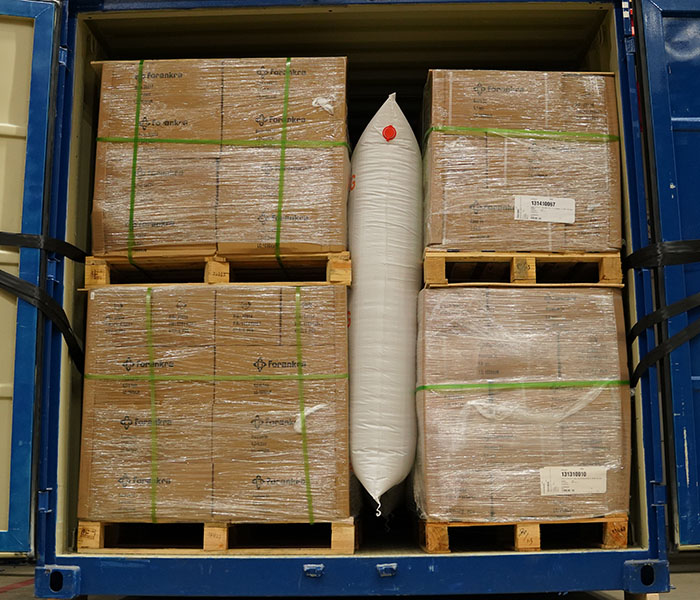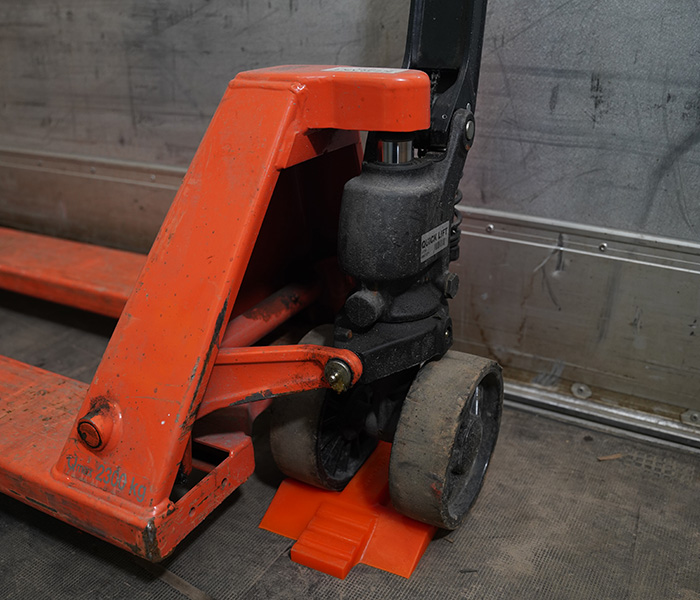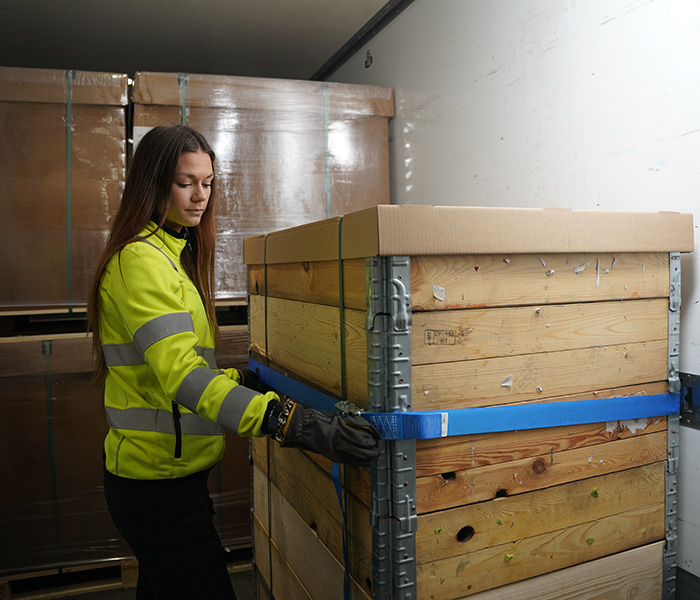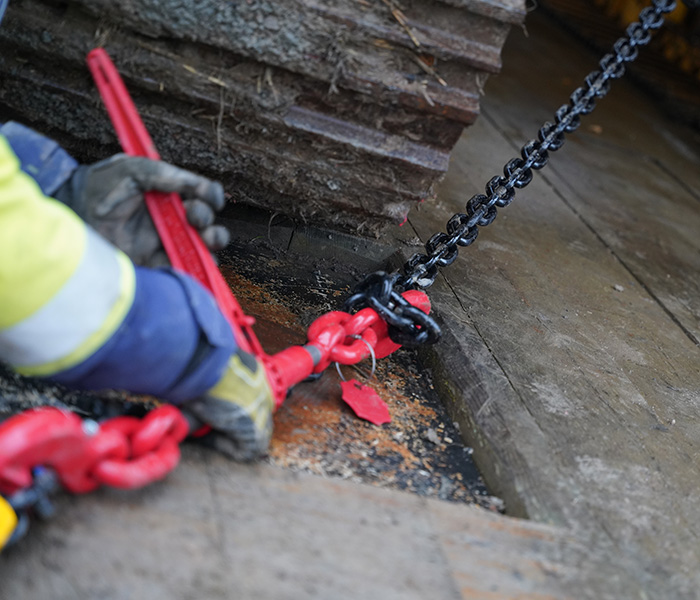Cargo securing equipment
There are many factors to consider before choosing the right cargo securing equipment. We have therefore compiled some control questions to consider before making a choice adapted to your need.
In this section, we also present examples of commonly used products in cargo securing. Finally, we present some tips on how to check your cargo securing equipment and when to replace it.
Questions before choosing the right cargo securing equipment
• How big is the vehicle? (heavier or lighter than 3.5 tonnes).
• Which conditions for cargo securing are there on the cargo carrier?
• What characteristics does the load have?
• How do you want to secure the cargo – by lashing, blocking or a combination of these methods?
Lashing
• If lashing inside – are there lashing fittings in the floor, wall or edge line?
• If lashing on an open cargo carrier – are there lashing fittings in the floor, sides or edge line?
Blocking
• If vertical blocking – are there blocking fittings in the floor and/or roof?
• If horizontal blocking – are there any tracks fitted to the walls?
• When halter lashing - what kind of lashing points are available on the floor?

Most commonly used products for cargo securing
Products for lashing
Lashings – Flexible and easy to use
To use a web lashing, or textile lashing, is one of the most common ways of securing cargo. One method that is often used is a top-over lashing (friction lashing). When using a top-over lashing the cargo is pressed down against the load carrier by the tensioning force built up in the lashing, simplified one could say that the weight is “increased”. This combined “weight” in interaction with the actual friction between the cargo and the load carrier's surface prevents the cargo from sliding. This type of lashing is also used to prevent cargo from tipping and/or to wander.
The tensioning force for the current lashing can be found on the marking (label) of the lashing and is called STF. When using the lashing as a direct lashing or a loop-lashing the strength in straight pull is used. When doing so the LC, or Lashing Capacity, is used.
Chain lashings - Higher strength and tension
When the lashing chain is used together with a chain tensioner (also called a load binder), they form a chain lashing. Chain lashing is most often used for cargo securing of heavy machinery and vehicles on an open cargo carrier. A chain lashing is used in the same way as a textile lashing with the distinction that it is more commonly used as a direct lashing. With a chain lashing in Grade 80 or Grade 100 much higher values for LC and STF are reached.
Fixed winches
Fixed winches are often mounted on the outside of the cargo carrier. The can be of a simple configuration with a slotted axis, tensioning device and locking or a little bit more advanced being encapsulated containing a web storage. They can be bolted or welded in place.
Products for blocking

Cargo bars are used for vertical blocking and to easily block and separate goods on the cargo carrier. Cargo bars equipped with a cargo hoop makes it easier to cover goods with a larger surface, for example boxes on a pallet. Keep in mind that light cargo carriers have a weaker construction and therefore a cargo bar with a weaker tension mechanism should be used.

Shoring poles and beams are used for blocking in transport trucks of all sizes and can be fixed horizontally or vertically to the cargo track system.
Examples of other useful cargo securing equipment

Dunnage bags are used to fill unwanted space in a cargo space – either between goods or between goods and the walls of the cargo carrier. The dunnage bag prevents the cargo from moving around in the cargo carrier and absorbs shocks and vibration.

Corner protection is used to help secure goods or packages that are not rigid, and to reduce wear to lashings that are used to secure goods with sharp edges. Corner protection is usually placed between the goods and the lashing.

Friction mats made of rubber or a similar material are used to increase friction between the cargo and the cargo floor. The friction mat not only reduces the need for cargo securing, but also reduces the time needed to secure cargo.

Stop blocks are used to prevent a vehicle from rolling away when parked or during vehicle transport.
Regularly inspect your cargo securing equipment
It is important to regularly inspect your equipment to ensure that it is intact, clean and damage free. In case of the slightest uncertainty, it must be replaced.
Equipment should be replaced if any of the following apply:
• Dirt and gravel have frayed the webbing from the inside and reduced its load capacity. To maintain full capacity it is important that webbing is intact and clean. If you use dirty webbing there is also a risk of damaging the goods.
• Check your equipment regularly to make sure there is no wear due to abrasion, tears, cuts or other edge damage to the webbing. If one or more of these types of damage are present, the lashing should be replaced immediately. If any cut exceeds 10 percent of the webbing width, it should be discarded immediately and not used.
• When checking lashing chains, it is important to ensure that the equipment does not have any broken or damaged links (for example, bent or stretched) and/or hooks.
• Check that the writing on the label or identification tag is legible. If the equipment is unmarked, ensure that a certificate is available, confirming the equipment's capacity.



